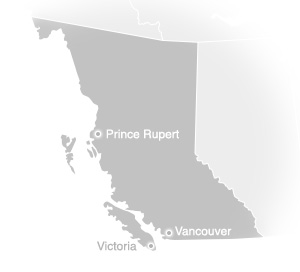Submitted by Kelsey on

Vancouver Island, the largest North American island in the Pacific, is a recreational paradise. It stretches 280 miles (450 km) in a northwesterly direction and is divided into two distinct areas. The rugged west coast, cut by deep fjords and piled high by mountains, is home to busy fishing and logging communities. Its a spectacular place to visit and unwind. The east coast is a peaceful paradise, rich with timber, farmlands and fishing streams, and home to beaches, villages and the provincial capital, Victoria. The Gulf Islands, a tourists delight, lie between the mainland and Vancouver Island and offer peace and serenity.
South & South Central Island
Victoria, on the south end of Vancouver Island, is a city of flowers where you will find streets lined with blossoming trees in springtime and magnificent hanging baskets in summer. Visit the famous British Columbia Museum, the provincial legislature or Craigdarroch Castle. Take a walk through Chinatown or browse through some of the citys finest antique shops.
Driving north from Victoria to Nanaimo will take you through such delightful communities as Duncan, Chemainus and Ladysmith, all offering wonderful island hospitality.
Central Island
The harbour city of Nanaimo, Vancouver Islands second-largest city, is a sea-oriented community on the east coast. Incorporated in 1874, this third-oldest city in B.C. has many well-preserved historic buildings and sites. Year-round harbour cruises will take you to see the areas incredible sea life. Northwest of Nanaimo, Parksville marks the beginning of Beach Country. At low tide, the water recedes hundreds of metres, leaving the sand exposed for beachcombing. Nearby Qualicum Beach is a marvellous place for sun tanning, swimming and exploring.
North Central Island
North through Lighthouse Country to the Comox Valley, the scenery changes, and the lofty mountains covered in dense forest slope to the sea. Courtenay is a busy city that supports a large farming community as well as logging and fishing industries. Enjoy the many delightful boutiques in town and visit the Courtenay Museum in the worlds largest vertical log cabin. Comox, just east of Courtenay, is another thriving community. Visit the dazzling air show held biannually at the Canadian Air Force base, then travel on through lush farmlands to Campbell River a fishing enthusiasts dream.
The central part of the island is heavily treed, mountainous and dotted with large lakes. Enjoy hiking, canoeing, swimming and fishing in Strathcona Provincial Park. Travel west to the village of Gold River, the spelunking capital of Canada.
North Island
Take a trip on the M.V. Uchuck III, a converted mine sweeper that sails regularly through the scenic waterways of Kyuquot and Nootka Sound. In the summer months visit Friendly Cove, the site of an ancient Indian Village where Captain Cook first made contact with the West Coast Indians in 1778. Further up the coast are Sayward, Port McNeill and Port Hardy, where fishing is a favourite sport. Northeast is Cape Scott Provincial Park, located on the islands northernmost tip.
Pacific Rim
On the west coast, which includes Ucluelet and Tofino, everything focuses on the ocean: fishing, whale-watching, nature cruises and miles of white sand. Hike the beaches, headlands and woodland trails of Long Beach. Explore pathways that lead from the beach, through the rainforest to secret coves and beach caves. Buy fresh seafood from the local fishermen or visit Hot Springs Cove, where you can swim in natural hot pools. In Port Alberni, rise early and sail on the M.V. Lady Rose down the fjord-like Alberni Inlet. Watch eagles soar and marvel at the scenery.
If hiking is your pastime, you will enjoy the many mountain trails. Take the path through the forest at Cathedral Grove in MacMillan Park and see the 800-year-old Douglas firs. Watch for eagles around Gabriola Cliffs.
Qualicum Beach: Milner Gardens & Woodland, an established historic estate which has hosted members of the royal family, is now open to the public.
Port Alberni: The McLean Mill National Historic Site, complete with a working 1926 steam sawmill, showcases the rustic beginnings of the B.C. forest industry.


